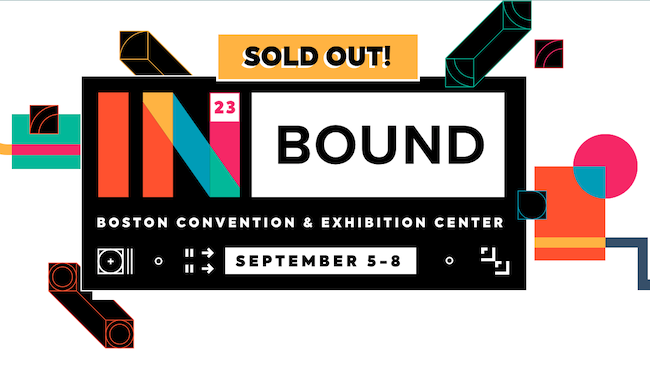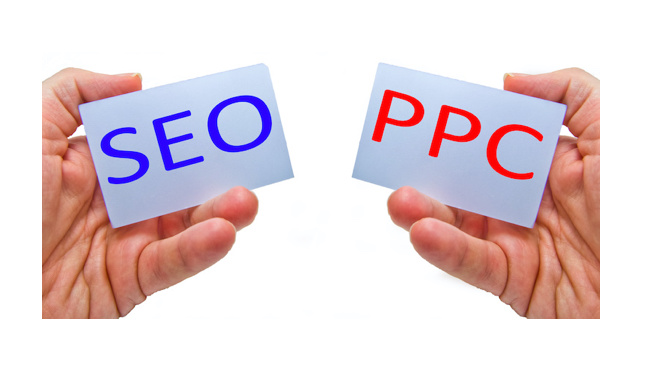B2B and Manufacturing Agenda for Inbound Conference 2023
Marketers in the B2B and manufacturing/industrial spaces could learn a lot from HubSpot’s annual marketing conference, simply called Inbound, Sept....
The fundamentals of inbound marketing just might push you to retire your old marketing ways and turn over a new leaf. Inbound marketing is different from traditional outbound marketing and has drastically changed the way businesses reach potential customers. Instead of the intrusive, sales-focused approach, inbound marketing relays heavily upon relationships. HubSpot, a leading developer of software products for inbound marketing, sales, and customer service calls it “the marketing that people love”– and it's no secret as to why. The focus of inbound is to engage with the right people at the right time and nurture them with relevant information until they are ready to move forward on their buyer's journey.
Providing your prospects with the information they need to make informed decisions allows them to be the ones in the driver's seat, and as a result, you can significantly shorten your sales cycle and better understand their challenges.
Traditional outbound marketing does not give power to the buyer but instead relies on standardized sale pitches distributed to the masses with hopes that the right person at the right time happens to see or hear your message. Let’s leave intrusive marketing practices in the past and start marketing to prospects in a way they want to be reached -- through inbound marketing!
In order to implement inbound marketing, one must have a good handle on the 5 key components that make it all possible.
The five fundamentals of inbound marketing are contacts, buyer persona, buyer journey, content, and goals. These fundamentals assist marketers in planning long-term strategies that will satisfy customers or clients without being interruptive. Let’s unwrap what each of these means and what role they play in creating a successful strategy for inbound marketing.
At the heart of inbound marketing is establishing human relationships. This could happen via social media, blogging, referrals, webinars, video the list goes on. As you acquire contacts, it is important to have a CRM (Customer Relationship Management) software to help you keep track of and organize your contacts. With the correct visibility over your contacts, you will be able to segment your lists to reach a specific audience with a message directed to them. Ahhh, how refreshing it is to receive information from a company that knows what you are interested in! Building a buyer persona helps create a deeper understanding of what your prospect needs.
A buyer persona is a fictional character made to represent a key target audience. Establish who you are trying to reach and come up with a biography about them. The purpose of this exercise is to help you understand your prospects better so that you can tailor your marketing and messaging that will connect with their needs.
It comes down to this. If you're trying to speak to every potential customer at once, then you won't connect with any of them. We are all tired of receiving worn-out, mass-produced marketing messages. Instead, focus on your target audience and craft a message that helps them. By creating a persona, you are speaking to the needs of a specific group of people with a specific challenge in need of a solution. By bearing this in mind, you can ensure that your offering is serving your audience and offering the best solution to address their needs. In short, a persona allows you to build a strategy that places your target audience at its core. Now, you are set up to connect with your prospect person-to-person just like your best salesperson would, but before they even become a marketing or sales-qualified lead.
The buyer’s journey is the process a prospect is engaging in before making a purchase and it’s broken down into three stages: Awareness, Consideration, and Decision. Check out a video example to see what we mean.
Of course, the path to purchase is not always linear. Facilitating the buyer's journey can be aided by creating targeted emails with helpful information, otherwise known as lead nurturing. In inbound marketing, lead nurturing guides a person from the awareness stage through to the decision stage. Lead nurturing allows you to meet the prospect where they are and offers them information at their own pace. Marketing the right content to prospects at the right time so that buyers can make informed, confident decisions is the key to a successful lead nurturing process.
Your content is like the pollen that attracts bees to flowers. Where is the first place you go when you need to make a buying decision? Chances are, you kick off your research with a simple Google search, and you click on the first result that you suspect will answer your questions. Your customers are the same way. They’re buzzing around, trying to make informed decisions, and you want to offer the most nourishing, irresistible flowers around!
Referencing your buyer persona while making content will help ensure relevance. Ask yourself – will this information help my prospect solve their problem? The importance of Google and overall search engine optimization (SEO) also means that it’s crucial to identify what keywords and search terms you want your business to rank for. Use tools like Ahrefs, Semrush, or Moz to research your target keywords and understand where you have the best opportunity to rank. HubSpot also has a comprehensive and free resource library on building out your SEO strategy.
Tone and writing style are also key variables that should not be overlooked. If you are trying to reach a refined audience, using slang and informal language may not be the right move. Ultimately, you want your audience to feel as if your content is specifically curated for them. This is all about building relationships, after all.
Once you’ve identified your topics, you’ll want to determine the kind of content you want to use. Content is a broad term that can be used in a variety of ways to support marketing goals; blogs, emails, videos, etc. are just a few examples. It's fundamental to any online strategy today. The benefits of content are bountiful and can help you in the following ways:
The final component of inbound marketing is goal setting. Setting goals and keeping track of your progress are essential. It’s critical that you keep a pulse on what is and isn’t working within your inbound marketing strategy. Do this by defining S.M.A.R.T. goals, which are:
Inbound marketing is all about attracting leads by offering strategic, optimized content developed and designed with your prospects’ key challenges in mind. Of course, as with any kind of relationship-building and trust-building work, inbound marketing requires a great deal of patience, time, and energy. From an SEO lens, it may take a while for your content to “win” your target keywords. But once you’ve started to see results, everything you’ve done will begin to compound, and the more you do, the more your efforts will pay off.
In other words, there is no "easy button" when it comes to building out a robust inbound marketing strategy, and it’s not something that just one person should own. More than likely, you’ll want help along the way so you can divide and conquer. Fortunately, you can even hire an inbound marketing or HubSpot-specific agency that works as an extension of your existing team to set up a successful inbound marketing to support you in the long term. Again, this isn’t a short-term tactic, it’s an investment; however, what we’ve seen again and again is that if you put the right effort and resources into a well-thought-out strategy, the rewards are significant. The leads and prospects you want will be reaching out to you, and they’ll be confident that your product or service will support their needs.

Marketers in the B2B and manufacturing/industrial spaces could learn a lot from HubSpot’s annual marketing conference, simply called Inbound, Sept....

Most marketers struggle to increase traffic to their websites, as there are a lot of ways to get from "point A to point B."

Generating new, qualified leads is crucial for sustaining and growing revenue. In the constantly changing world of digital marketing, your website...